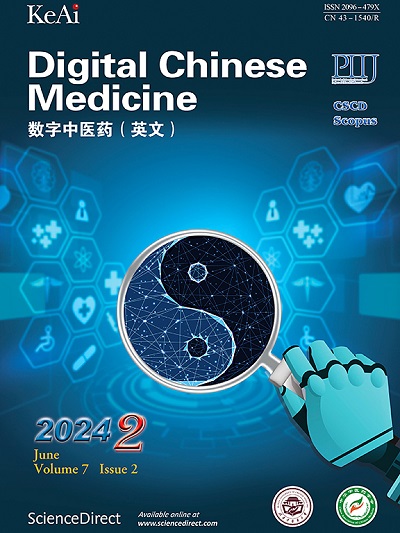Effects of needling at Sanyinjiao (SP6) acupuncture point on blood glucose levels and cardiovascular functions in patients with type 2 diabetes mellitus: a randomized placebo-controlled study
Q3 Medicine
引用次数: 0
Abstract
Objective
To determine the effect of needling at Sanyinjiao (SP6) on random blood glucose (RBG) levels and cardiovascular function in patients with type 2 diabetes mellitus (T2DM).
Methods
In this randomized placebo-controlled study, T2DM patients (aged 35 – 65 years) were recruited from the Government Yoga and Naturopathy Medical College and Hospital, Chennai, India, between January 5, 2022 and March 15, 2023. Participants were randomly assigned to either acupuncture group or sham acupuncture group. The acupuncture group received bilateral needling at Sanyinjiao (SP6) while sham acupuncture group received needling at a non-acupuncture point [1.5 cun lateral to Sanyinjiao (SP6)] for 30 min. Primary outcome was RBG, and secondary outcomes included systolic blood pressure (SBP), diastolic blood pressure (DBP), pulse rate (PR), pulse pressure (PP), mean arterial pressure (MAP), rate pressure product (RPP), and double product (Do-P). All parameters were assessed immediately before and after intervention.
Results
A total of 100 patients with T2DM were enrolled in the study, and blinded to acupuncture group (n = 50) and sham acupuncture group (n = 50). Intergroup analysis showed that significant reductions in RBG (P < 0.001), SBP (P = 0.035), DBP (P = 0.008), and MAP (P = 0.009) were found in acupuncture group compared with sham acupuncture group. Within-group analysis showed significant reductions in RBG (P < 0.001), SBP (P < 0.001), DBP (P = 0.008), PP (P = 0.023), MAP (P < 0.001), RPP (P < 0.001), and Do-P (P = 0.002) in acupuncture group, whereas sham acupuncture group showed a significant decrease in PR (P = 0.023) only in the post-test assessment compared with pre-test assessment.
Conclusion
A period of 30 min of needling at the Sanyinjiao (SP6) acupuncture point reduces RBG and promotes cardiovascular function in patients with T2DM as compared with needling at non-acupuncture points. Sanyinjiao (SP6) acupuncture may offer an immediate, non-pharmacological intervention to strengthen glycemic control management and cardiovascular health in T2DM patients.
针刺三阴交穴对2型糖尿病患者血糖水平和心血管功能的影响:一项随机安慰剂对照研究
目的探讨针刺三阴角(SP6)对2型糖尿病(T2DM)患者随机血糖(RBG)水平及心血管功能的影响。方法在这项随机安慰剂对照研究中,于2022年1月5日至2023年3月15日从印度金奈政府瑜伽和自然疗法医学院和医院招募T2DM患者(年龄35 - 65岁)。受试者随机分为针刺组和假针刺组。针刺组双侧针刺三阴交(SP6),假针组非针刺三阴交(SP6)外侧1.5寸处,针刺30 min。主要指标为RBG,次要指标为收缩压(SBP)、舒张压(DBP)、脉率(PR)、脉压(PP)、平均动脉压(MAP)、率压差(RPP)、双压差(Do-P)。在干预前后立即评估所有参数。结果共纳入100例T2DM患者,分为针刺组(n = 50)和假针组(n = 50)。组间分析显示RBG显著降低(P <;针刺组与假针组比较,收缩压(P = 0.035)、舒张压(P = 0.008)、MAP (P = 0.009)明显降低。组内分析显示RBG显著降低(P <;0.001),收缩压(P <;0.001),菲律宾(P = 0.008), PP (P = 0.023),地图(P & lt;0.001), RPP (P <;0.001), Do-P (P = 0.002),而假针灸组仅在测试后评估中PR较测试前评估有显著降低(P = 0.023)。结论与非穴位针刺相比,针刺三阴交穴30 min可降低T2DM患者RBG,促进心血管功能。三阴角(SP6)针刺可以为T2DM患者提供一种即时的、非药物干预,以加强血糖控制管理和心血管健康。
本文章由计算机程序翻译,如有差异,请以英文原文为准。
求助全文
约1分钟内获得全文
求助全文
来源期刊

Digital Chinese Medicine
Medicine-Complementary and Alternative Medicine
CiteScore
1.80
自引率
0.00%
发文量
126
审稿时长
63 days
期刊介绍:
 求助内容:
求助内容: 应助结果提醒方式:
应助结果提醒方式:


